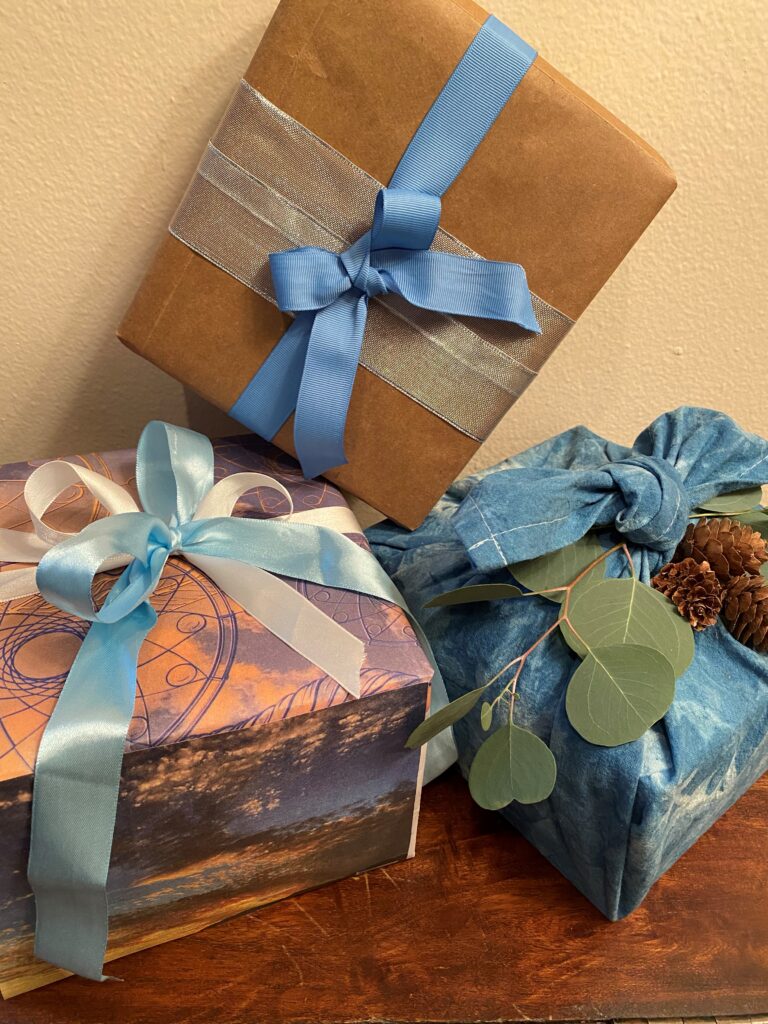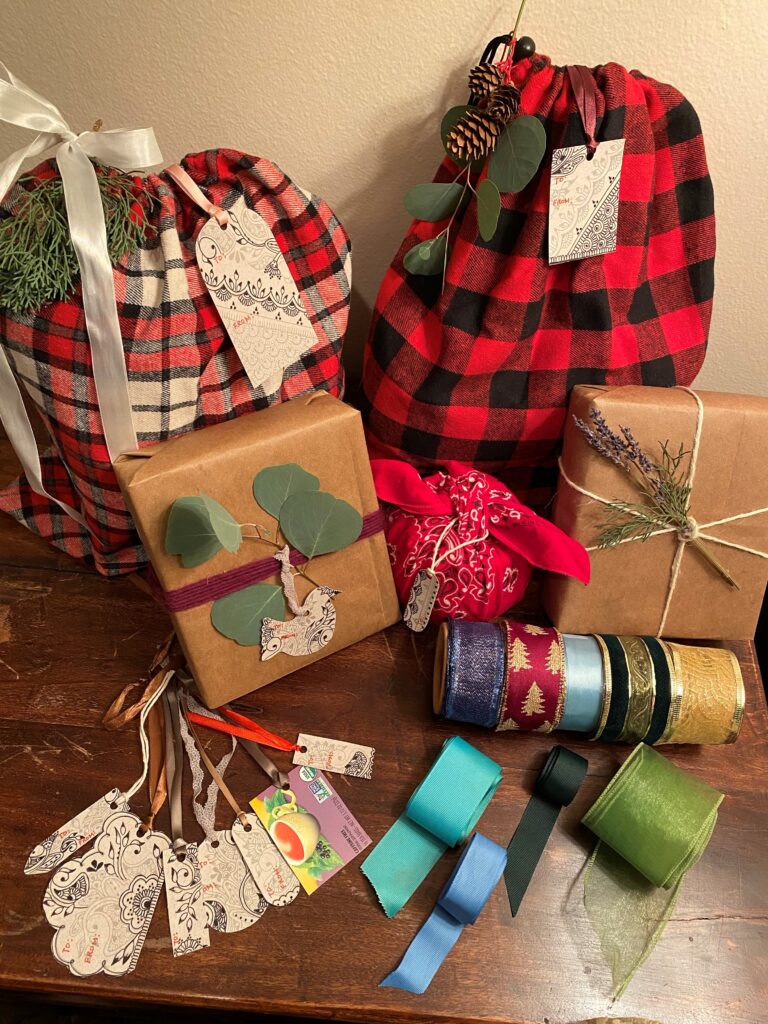

The holiday season is here and amidst the warmth and togetherness, celebration and cheer, is lots of unnecessary, non-recyclable trash. Each year we generate an additional seven million pounds of waste between Thanksgiving and New Year’s Day, and it is estimated that 50,000 trees are cut down to make wrapping paper. Wrapping paper is a $7 billion industry in America, for a temporary, disposable product. According to Earth 911, the U.S. produces approximately 4.6 million pounds of wrapping paper each year, and because of glitter, metallic coatings, and shiny laminates, at least 2.3 million pounds of that can’t be recycled and ends up in the landfill. Just as plastic bags jam up sorting machines at the recycling plant, non-recyclable wrapping paper and plastic ribbons and bows can cost time and trouble on the back end, only to get thrown in the landfill anyway. Even recyclable paper is thin and often full of ink, making it difficult to extract fibers from during recycling. In 2018, we threw away 227,000 miles of wrapping paper—almost enough to paper a path to the moon!
It has now been 104 years since the Hallmark brothers were credited with starting the wrapping paper industry, amidst the inception of our throwaway culture. It seems it’s time for a change. There are ways to indulge the senses in holiday cheer without leaving behind garbage bags filled with shiny, plastic-coated trash. Here are 10 ideas to help us ditch the waste!
- USE WHAT YOU ALREADY HAVE! Saving used wrapping paper and gift bags for reuse goes a long way to minimizing waste. Paper can only be used so many times, but when it finally goes to the recycling bin or trash bin, we will know that we have spared trees, and delayed landfill waste and micro-plastics in the environment for as long as possible.
- Brown paper is always recyclable and until the early 1900’s was the only paper gifts were wrapped in. Paper grocery bags can be repurposed to make lovely packages, as can any brown Kraft paper. Images cut out from last year’s holiday cards, stamps, or drawings can decorate the brown paper to add color and interest.
- Sheet music, old blueprints, and pages from old books all make interesting wrapping paper for small gifts. Many of us have paper maps that we no longer use because we now have digital navigation; old maps make beautiful packages!
- Make reusable gift bags from fabric! Many worn-out clothing items, bed linens, and tablecloths can be used to make gift bags with minimal sewing. They can be dyed rich colors for the season and, once made, can last for years and years.
- Furoshiki is a traditional gift wrapping technique from Japan. A large square of fabric is wrapped around the gift with opposing corners tied snugly together. There are many techniques for wrapping gifts of different shapes, but the basic method of tying opposing corners works for most. You can buy Furoshiki fabrics, but it can also be fun to make your own. Upcycling sheets or tablecloths can work well for simple, no-sew gift wraps, or they can be dyed and embellished with trim, ribbons, patches, or lace. Using tea towels, bandanas, or scarves is a way to wrap a gift inside a gift!
- Most of us are up to our ears in shipping boxes. Covering them in decorative paper to make reusable gift boxes that will be used year after year can be an eco-friendly choice. Rather than tearing through non-recyclable paper that gets thrown away, kids can open reusable, decorated boxes.
- Using items from nature can add beauty to gifts, whether using Furoshiki or brown paper. Adding sprigs of lavender, rosemary, eucalyptus, pine needle tassels, cinnamon sticks, or dried orange slices brings a little nature in and adds scent.
- Twine, raffia, or a piece of yarn looks lovely on wrapped gifts. Silk, velvet, or other fabric ribbons are elegant, and special enough to be reused year after year.
- Gift wrapping tape wasn’t invented until 1930. Prior to that, packages were tied up with string. Clear, plastic tape can’t be recycled, but washi tape can; it is made from renewable plant sources so it is recyclable, biodegradable, and decorative!
- Use magazines, newspapers, and other materials found around the house. TNT would be proud to have our past issues used as wrapping paper. Newspaper is one of the easiest materials to recycle and, of course, is fully biodegradable.
Recycling tip for holiday wrapping: If it crumples into a ball and does not “bounce back” it’s likely pure paper.












